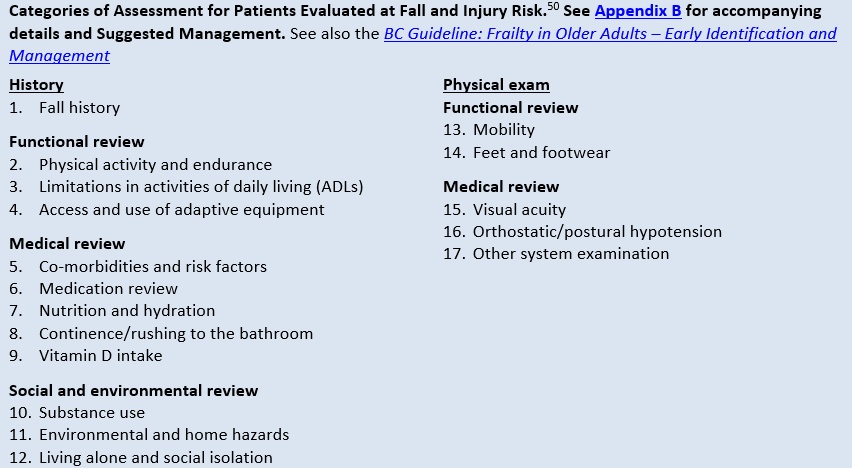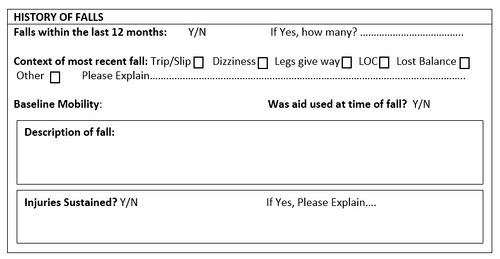How Dementia Fall Risk can Save You Time, Stress, and Money.
Dementia Fall Risk Fundamentals Explained
Table of ContentsNot known Details About Dementia Fall Risk Examine This Report on Dementia Fall RiskThe 30-Second Trick For Dementia Fall RiskUnknown Facts About Dementia Fall RiskThe 6-Minute Rule for Dementia Fall Risk
You could be anxious because you have actually had a fall prior to or since you have actually discovered you're starting to really feel unsteady on your feet. You could have noticed modifications to your health, or simply seem like you're reducing a little. Whatever the reason, it isn't uncommon to become careful and lose confidence, and this can quit you doing the things you made use of to do and make you feel a lot more isolated.If you've had an autumn or you've begun to feel unsteady, inform your medical professional also if you really feel great otherwise. Your physician can examine your balance and the method you stroll to see if improvements can be made. They may be able to refer you for a drops risk evaluation or to the drops avoidance service.
This info can be gotten through interviews with the person, their caretakers, and an evaluation of their medical records. Begin by asking the private concerning their history of falls, including the regularity and situations of any kind of recent falls. Dementia Fall Risk. Inquire about any type of flexibility issues they may experience, such as unstable or trouble walking
Conduct a thorough evaluation of the person's drugs, paying certain attention to those understood to raise the threat of drops, such as sedatives or medications that lower high blood pressure. Figure out if they are taking multiple medications or if there have been recent modifications in their medicine program. Examine the individual's home setting for potential risks that might enhance the danger of falls, such as poor lighting, loosened carpets, or absence of grab bars in the shower room.
Some Known Facts About Dementia Fall Risk.
Overview the person via the loss threat analysis type, discussing each question and videotaping their reactions accurately. Determine the complete danger score based on the feedbacks offered in the analysis type.
This strategy may consist of workout programs to improve toughness and balance, medicine changes, home adjustments, and references to other experts as required. On a regular basis monitor the individual's progression and reassess their risk of falls as required. Customize the care strategy based upon modifications in their wellness status or home atmosphere. Supply recurring education and learning and assistance to advertise safety and security and decrease the danger of drops in their daily living activities.
Numerous research studies have shown that physical treatment can aid to lower the danger of dropping in grownups ages 65 and older. In a brand-new study (that checked out falls danger in females ages 80 and older), researchers determined the economic influence of selecting physical therapy to stop drops, and they found that doing so conserves $2,144, consisting of all the covert expenses of your time, discomfort, missed life occasions, and the dollars paid for services.
The Buzz on Dementia Fall Risk
Assessing your balance, strength, and walking capability. A home security assessment. Based on the assessment results, your physical therapist will certainly create a strategy that is customized to your particular demands.
Older grownups that have problem walking and talking at the exact same time go to a greater threat of falling. Dementia Fall Risk. To help increase your safety throughout day-to-day activities, your physiotherapist may design a training program that will certainly test you to preserve standing and strolling while you do one more job. Examples consist of strolling or standing while counting backward, having a discussion, or lugging a bag of grocery stores
Your physiotherapist additionally can recognize which activities you ought to avoid to remain safe. Community-based falls prevention programs assist individuals to: Lower their worry of dropping. Establish objectives for increasing their exercise. Make their homes more secure. Exercise more to increase their strength and equilibrium. click reference These programs frequently are led by volunteer instructors.
An Unbiased View of Dementia Fall Risk

Measles, or rubeola, is a highly transmittable, intense viral infectious disease brought on by the measles infection. Some individuals assume of measles as simply a breakout and fever that improves in a couple of days; however, measles can trigger serious health and wellness complications, particularly in children more youthful than 5-years-old. The very best security versus measles is the measles, mumps, and rubella (MMR) vaccine.
Autumns are a common source of injury among older grownups. According to the CDC, in one year alone, fall-related injuries added to over $50 billion in clinical prices (Dementia Fall Risk). In healthcare facility setups, older adults go to particularly high threat of falls due to the fact that their lowered wheelchair from being confined to a space or bed.
Dementia Fall Risk Fundamentals Explained

She has no history of falls, her stride is constant, and she voids with no problems. The previous registered nurse states that she calls for assistance to the shower room when she requires to go.
Instances of common autumn interventions/measures consist of: Making certain a patient's necessary things are within reach. Placing the individual's bed rails up with the alarm system on. Assisting a client while they're rising from bed. Beyond comprehending just how to make use of the Johns Hopkins Loss Risk Evaluation Tool, it is necessary that centers integrate its usage right into an extra thorough fall prevention plan.